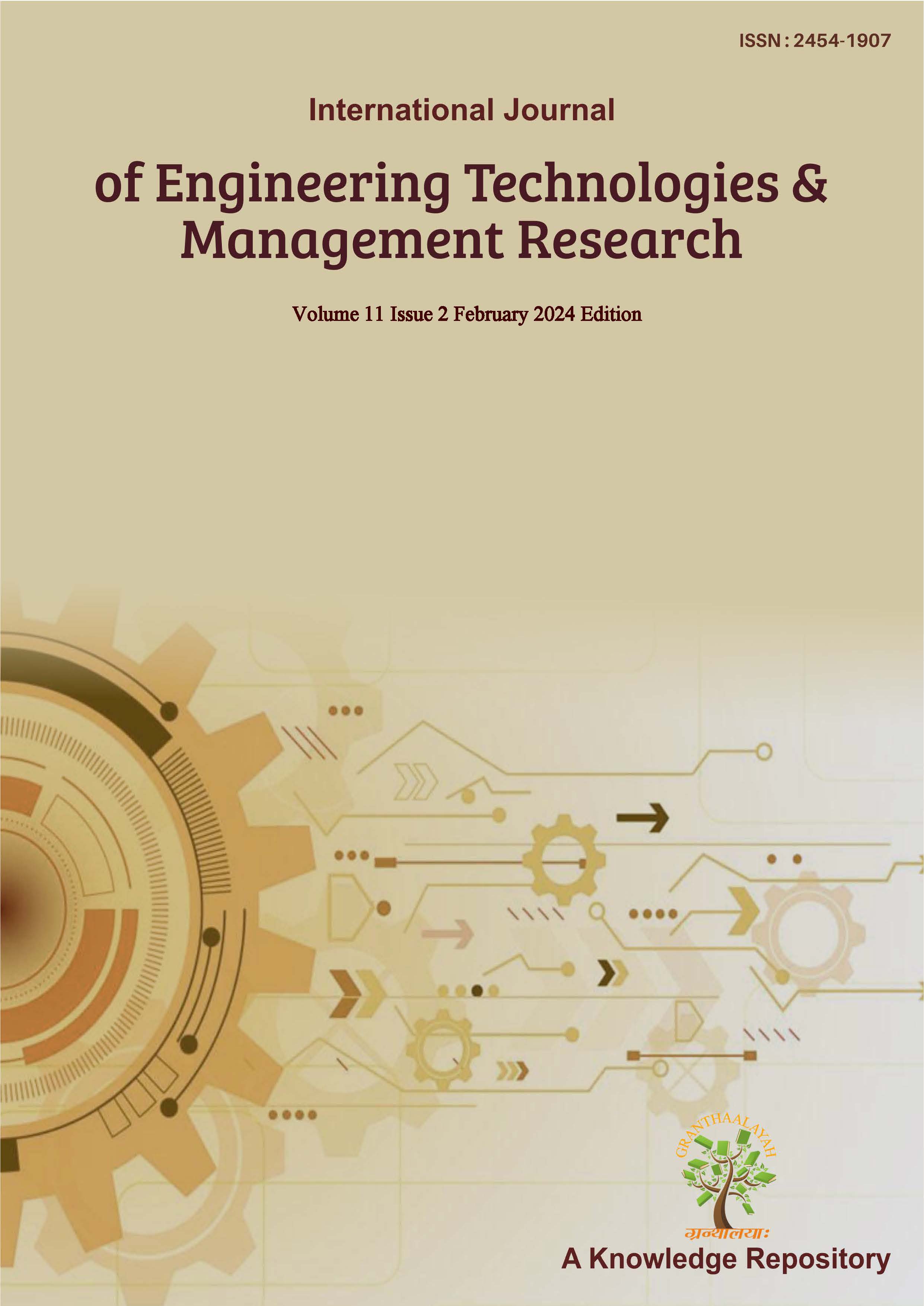MODELING AND OPTIMIZATION OF PERISTALTIC FLUID TRANSPORT IN AXISYMMETRIC, POROUS STRUCTURES
DOI:
https://doi.org/10.29121/ijetmr.v11.i2.2024.1407Keywords:
Peristaltic Transport, Porous Media, Circulation, Nutrient Absorption, Brinkman, DarcyAbstract
Peristaltic transport, a fundamental physiological and engineering process, involves the movement of fluid through a distensible tube via sequential compression and relaxation. This study investigates the peristaltic transport of an incompressible Newtonian fluid in an axisymmetric, porous, corrugated tube, emphasizing the interplay between fluid dynamics and the tube's structural characteristics. Utilizing lubrication theory and perturbation analysis within a wave frame of reference, we explore the effects of hydraulic resistivity, geometric parameters of the corrugation, and porous layer thickness on the phenomena of trapping and circulation. Our findings reveal that hydraulic resistivity significantly influences the development of circulation regions within the fluid core, which has implications for the efficiency of mixing and nutrient absorption in biological and industrial applications. Additionally, the geometric configuration of the wavy porous layer—specifically its amplitude and thickness—critically impacts the formation of trapping and circulation regions, thereby affecting fluid transport efficiency. This work not only advances our understanding of peristaltic pumping mechanisms but also highlights the potential for optimizing fluid transport processes in both biological systems and industrial applications. The insights gained from this study contribute to the design of more efficient peristaltic pumps and offer a valuable framework for future research aimed at enhancing substance delivery and mixing through peristaltic transport.
Downloads
References
Barnes, P. J., Drazen, J. M., Rennard, S. I., & Thomson, N. C. (2008). Asthma and COPD: Basic Mechanisms and Clinical Management. Academic Press.
Barton, C., & Raynor, S. (1968). Peristaltic Flow in Tubes. The Bulletin of Mathematical Biophysics, 30(4), 663–680. https://doi.org/10.1007/BF02476682
Chhabra, R. P., & Richardson, J. F. (2008). Non-Newtonian Flow and Applied Rheology: Engineering Applications. Butterworth-Heinemann.
Goharzadeh, A., Khalili, A., & Jo̸rgensen, B. B. (2005). Transition Layer Thickness at a Fluid-Porous Interface. Physics of Fluids, 17(5), 057102. https://doi.org/10.1063/1.1894796
Gupta, A. K., & Gupta. (2007). Industrial Automation and Robotics. Firewall Media.
Mishra, M., & Rao, A. R. (2008). Peristaltic Flow of a Two-Layer System in a Poroflexible Tube. Journal of Porous Media, 11(1), 51–71. https://doi.org/10.1615/JPorMedia.v11.i1.40
Pozrikidis, C. (2005). Axisymmetric Motion of a File of Red Blood Cells Through Capillaries. Physics of Fluids, 17(3), 031503-031503–031514. https://doi.org/doi:10.1063/1.1830484
Shapiro, A. H., Jaffrin, M. Y., & Weinberg, S. L. (1969). Peristaltic Pumping with Long Wavelengths at Low Reynolds Number. Journal of Fluid Mechanics, 37(04), 799–825. https://doi.org/10.1017/S0022112069000899
Shit, G. C., Roy, M., & Ng, E. Y. K. (2010). Effect of Induced Magnetic Field on Peristaltic Flow of a Micropolar Fluid in an Asymmetric Channel, 1007.0923. https://doi.org/10.1002/cnm.1397
Wei, H. H., Waters, S. L., Liu, S. Q., & Grotberg, J. B. (2003). Flow in a Wavy-Walled Channel Lined with a Poroelastic Layer. Journal of Fluid Mechanics, 492, 23–45. https://doi.org/10.1017/S0022112003005378
Published
How to Cite
Issue
Section
License
Copyright (c) 2024 Dr. Curtis Boodoo

This work is licensed under a Creative Commons Attribution 4.0 International License.
License and Copyright Agreement
In submitting the manuscript to the journal, the authors certify that:
- They are authorized by their co-authors to enter into these arrangements.
- The work described has not been formally published before, except in the form of an abstract or as part of a published lecture, review, thesis, or overlay journal.
- That it is not under consideration for publication elsewhere.
- That its release has been approved by all the author(s) and by the responsible authorities – tacitly or explicitly – of the institutes where the work has been carried out.
- They secure the right to reproduce any material that has already been published or copyrighted elsewhere.
- They agree to the following license and copyright agreement.
Copyright
Authors who publish with International Journal of Engineering Technologies and Management Research agree to the following terms:
- Authors retain copyright and grant the journal right of first publication with the work simultaneously licensed under a Creative Commons Attribution License (CC BY-SA 4.0) that allows others to share the work with an acknowledgment of the work's authorship and initial publication in this journal.
- Authors can enter into separate, additional contractual arrangements for the non-exclusive distribution of the journal's published version of the work (e.g., post it to an institutional repository or edit it in a book), with an acknowledgment of its initial publication in this journal.
- Authors are permitted and encouraged to post their work online (e.g., in institutional repositories or on their website) before and during the submission process, as it can lead to productive exchanges, as well as earlier and greater citation of published work.
For More info, please visit CopyRight Section





















